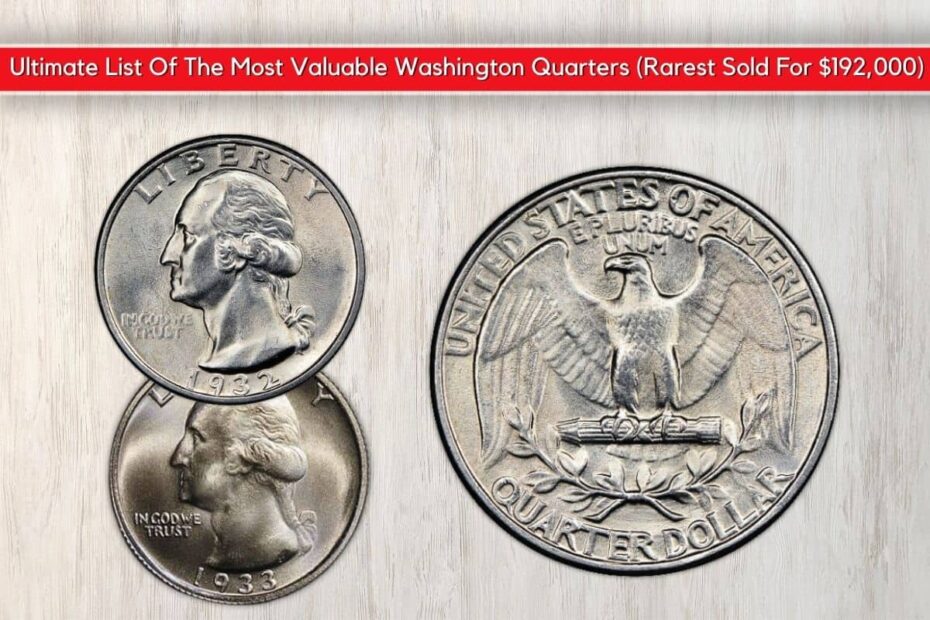Discovering Hidden Wealth in Your Pocket Change
Imagine holding a quarter that‘s worth more than a month‘s rent. As a seasoned numismatist with decades of experience, I‘ve witnessed firsthand how seemingly ordinary coins can transform into extraordinary treasures. Washington Quarters aren‘t just currency – they‘re historical artifacts carrying stories of economic shifts, minting innovations, and collector passion.
The Genesis of a Collecting Obsession
My journey into Washington Quarter collecting began in my grandfather‘s study, surrounded by meticulously organized coin albums. He would share stories about rare quarters, explaining how each coin represented more than monetary value – they were snapshots of American history.
Understanding the Washington Quarter‘s Rich Heritage
The Washington Quarter emerged in 1932, initially conceived as a commemorative coin celebrating George Washington‘s 200th birthday. What started as a temporary design became a numismatic staple, evolving through multiple compositions and design iterations.
Material Evolution: From Silver to Clad
The quarter‘s composition tells a fascinating story of economic adaptation. From 1932 to 1964, these coins were struck in 90% pure silver – a period now considered the golden era for collectors. The transition to clad composition in 1965 marked a significant turning point, reflecting broader economic challenges and monetary policy changes.
The Most Valuable Washington Quarters: A Collector‘s Perspective
The $192,000 Miracle: 2000-P Sacagawea Dollar Muled Quarter
Every collector dreams of discovering a coin like the 2000-P Sacagawea Dollar Muled Quarter. This extraordinary specimen represents a perfect storm of minting error and rarity. Imagine a coin created through an unprecedented manufacturing mistake, suddenly transforming from 25 cents to a six-figure treasure.
The coin‘s unique characteristics emerged from an accidental combination of dies never intended to meet. Such errors are so rare that when they surface, the collecting world takes notice. This particular quarter represents more than monetary value – it‘s a testament to the unpredictability of coin production.
Decoding Rarity: What Makes a Quarter Valuable
Several critical factors determine a Washington Quarter‘s worth:
- Mint Condition: Pristine, uncirculated coins command astronomical prices
- Rare Mint Marks: Specific production locations create scarcity
- Minting Errors: Unexpected manufacturing variations increase desirability
- Historical Context: Coins from pivotal economic periods carry additional significance
The Collector‘s Toolkit: Identifying Valuable Quarters
Successful quarter hunting requires more than luck – it demands knowledge, patience, and a trained eye. Professional collectors develop specialized skills to identify potential treasures:
Grading Techniques
Professional coin grading involves meticulous examination of surface conditions, strike quality, and preservation state. The Professional Coin Grading Service (PCGS) uses a rigorous 70-point scale, with coins rated MS-70 representing absolute perfection.
Mint Mark Mysteries
Each mint mark carries its own story. San Francisco (S), Denver (D), and Philadelphia (P) marks represent different production facilities, each with unique characteristics. Some years saw dramatically lower production numbers, instantly increasing a quarter‘s potential value.
Market Trends and Investment Potential
Washington Quarters aren‘t just collectibles – they‘re alternative investments. Over the past decades, rare quarters have consistently outperformed traditional investment vehicles. A quarter purchased for $50 might appreciate to thousands within years.
Economic Factors Influencing Coin Values
Silver prices, collector demand, and historical significance continuously reshape the quarter market. Economic uncertainties often drive increased interest in tangible, historical assets like rare coins.
Preservation: Protecting Your Numismatic Investments
Proper coin preservation requires scientific precision. Humidity, temperature, and handling techniques dramatically impact long-term value. Professional collectors invest in specialized storage solutions, treating each coin as a delicate historical artifact.
Storage Recommendations
- Use non-reactive, archival-quality holders
- Maintain consistent temperature and humidity
- Handle coins by edges using cotton gloves
- Store in cool, dark environments
The Human Element: Why We Collect
Beyond financial considerations, coin collecting represents a profound connection to history. Each quarter tells a story – of economic challenges, technological innovations, and national identity.
For many collectors, the true value isn‘t measured in dollars but in historical significance and personal passion.
Conclusion: Your Quarter Might Be a Hidden Treasure
As you read this guide, take a moment to examine the quarters in your pocket. That seemingly ordinary coin might be a gateway to a fascinating world of numismatic discovery.
Remember: In the world of coin collecting, knowledge is the most valuable currency.
About the Author
With over four decades of numismatic experience, I‘ve dedicated my life to understanding the stories behind America‘s coins. My collection represents not just monetary value, but a lifelong passion for preserving historical narratives.
Happy hunting, fellow collectors.
